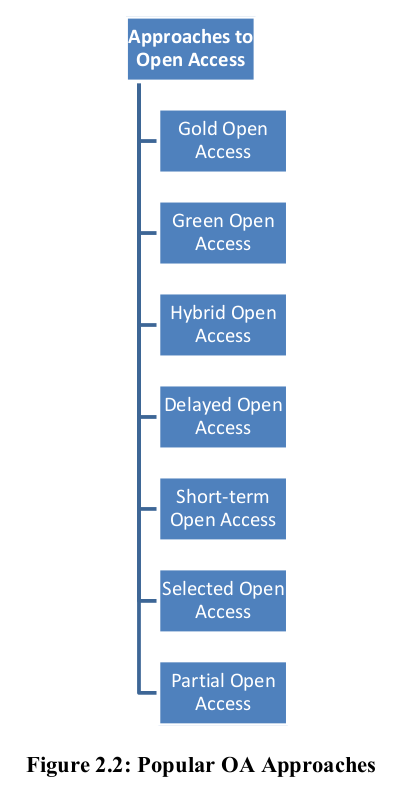2.5 Approaches to Open Access
OA publications are predominantly available through gold and green OA channels, as indicated in earlier sections. Another few models have been introduced very recently by the commercial publishers for featuring some parts of their scholarly contents in OA domain. Those are mainly selective open contents with or without appropriate OA permissions or licenses. Some of the popular OA models as practiced by the e-journal publishers are: (i) Hybrid OA, (ii) Delayed OA, (iii) Short-term OA, (iv) Selected OA, and (v) Partial OA. In hybrid OA model, publishers publish OA articles in toll-access scholarly journals, after receiving certain article processing charges (APC) from the authors. In Delayed OA model, publishers offer free access after a specified period, anywhere from 6 months to 2 years. In Short-term OA model, publishers offer free access until a specified period, anywhere from 6 months to 1 year. Then after, contents are available to subscribers only. In Selected OA model, publishers selectively offer free access to selected contents only. Other contents are available to subscribers only. In Partial OA model, publishers selectively offer free access to contents of particular sections only, e.g., research papers, but not review papers. Other contents are available to subscribers only.
Usually in Gold OA and Hybrid OA models, publishers publish articles with Creative Commons (CC) licenses. These two models belong to Libre OA category. OA contents available with other four models don’t explicitly carry CC or similar licenses. These four models mainly belong to Gratis OA category. Figure 2.2 gives a glimpse of different approaches of OA to scholarly literature, where a diversity of content models is recorded.

